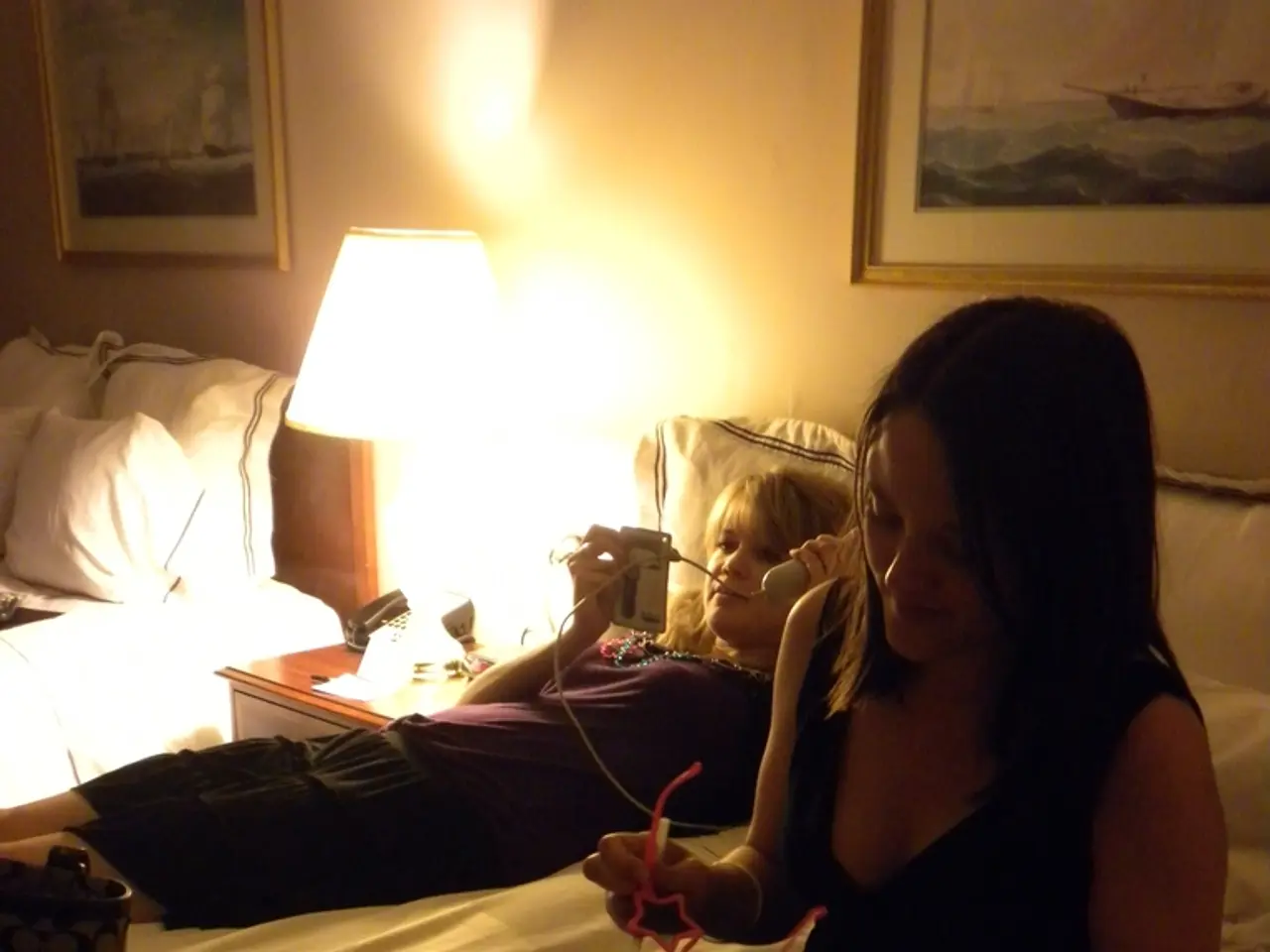Restless slumber disrupted by your bedmate
Lost in the Land of Snore and Roll: The Unsettling Sleep Tales of Many Couples
Late-night disturbances courtesy of your partner's sawing, snorting, and gurgling - isn't this a familiar nightmare? While it may offer little comfort, you're not alone, especially if you're a lady.
Sleep specialist Kneginja Richter often finds herself in the midst of conversations with couples plagued by sleep issues. "The ladies tend to seek my advice when there are problems with shared sleep," says the chief physician of the CuraMed day clinic in Nuremberg. "They prefer sleeping in the marital bed, but struggle due to their partner's snoring or restless tossing and turning."
As a result, the next morning often sees these sufferers with dark circles, lots of yawning, and a general feeling of being sluggish. Their deep sleep had been disrupted, and they never quite got the peace they needed.
Gender's Role in Sleep Disruptions
Studies show that gender plays a significant role in the type and frequency of sleep problems. Women are more easily awakened and are more sensitive to noises, especially during phases such as puberty, pregnancy, motherhood, or menopause. This is often due to hormonal changes, as Richter explains.
On the other hand, men often grapple with obstructive sleep apnea – nocturnal breathing pauses and snoring. This can be attributed to anatomical features like a larger neck circumference and more visceral abdominal fat.
The Paradox of Shared Sleep
One partner snores, the other cringes beside them - this sounds like a recipe for disaster. However, Richter notes that women, despite their restless nights, often find comfort in the shared bed. "It's a strange paradox," she admits.
Solutions for the Restless Nights
Perhaps the simplest solution is to pop in a pair of high-quality earplugs, if your partner snores. You can also try heading to bed earlier than the disturbance.
Investing in a larger bed, with a width of 2 or 2.20 meters, might do the trick. This gives each partner their safety zone. Plus, the noise isn't as close to one's own ears. Couples are better off choosing separate mattresses instead of one large one. If one tosses and turns, the other feels less of it.
However, this distance may not be enough to make a significant difference. In such cases, at least one wall between the sleepers helps - separate places for the night. A step that many couples are hesitant to take, as Richter points out: "Separate beds might be labeled as relationship problems." However, they can actually improve sleep quality, well-being, and even satisfaction with sexuality – positively impacting the partnership.
Mind the Eyes: the Risks of Sealed Mouth Social Media Trend
While we're on the topic of sleep, beware the "Mouth Taping" trend flooding social media. A study warns against this practice, finding it potentially harmful.
Sources
- ntv.de, Ricarda Dieckmann, dpa
- [1] "The Long Night's Journey Into Day: Strategies for Improving Your Sleep" - Psychology Today, Dr. John B. DiMartio
- [2] "Sleep Disorders: Common Problems and Solutions" - Harvard Health Publishing
- [3] "How to Stop Snoring: Tips and Strategies to Alleviate this Common Problem" - Mayo Clinic
- [4] "Health Benefits of Separate Beds: A National Sleep Foundation Study" - National Sleep Foundation, Dr. Michael Breus
- [5] "The science of sleep: why we should encourage snoring partners" - The Guardian, David Rowan
- The 'Mouth Taping' trend, popularized on social media, has been warned against by studies, suggesting it could pose potential harm to individuals.
- As seen in the study conducted by Kneginja Richter, female partners often suffer from sleep disorders due to their partners' snoring or restless movements, which can impact mental health, health-and-wellness, and the overall partnership, highlighting the importance of addressing these issues through science-based solutions.








